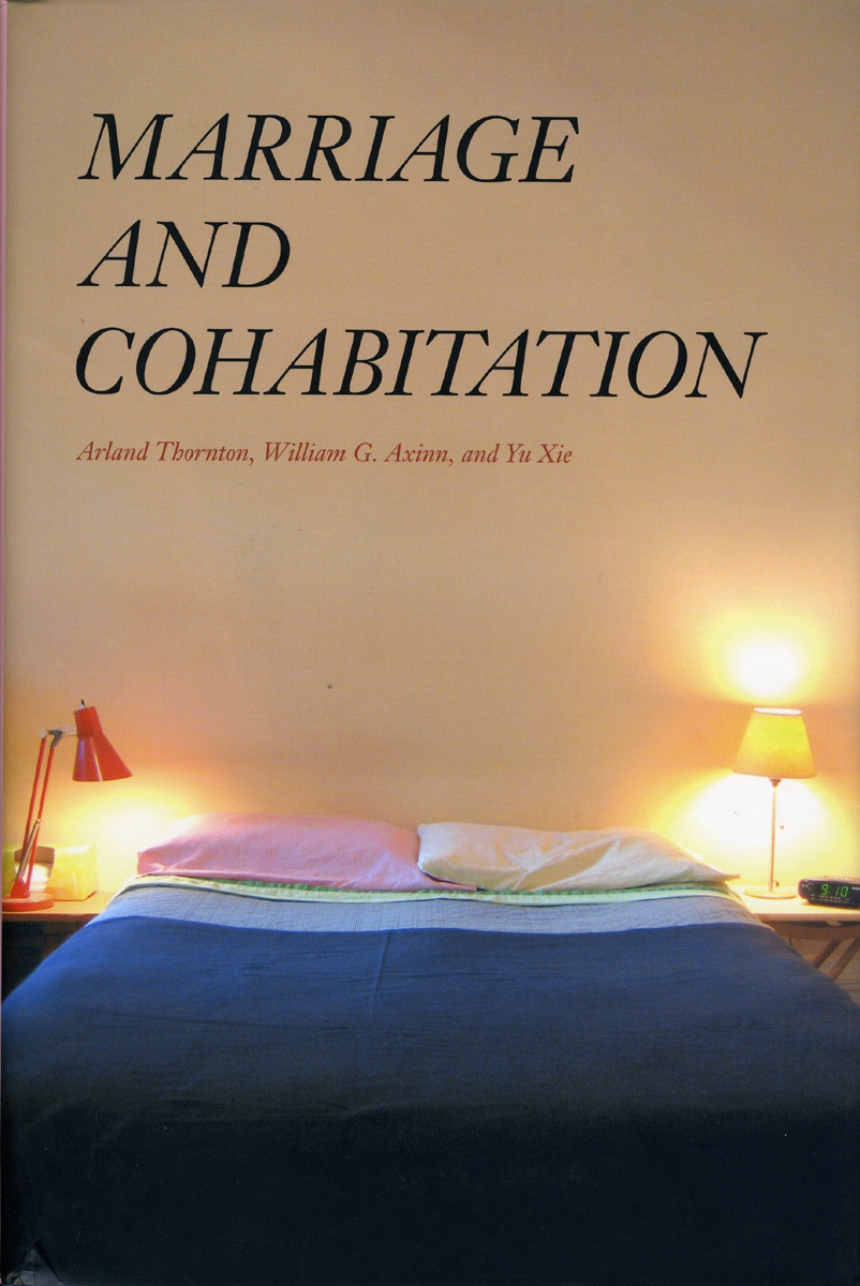Marriage and Cohabitation
In an era when half of marriages end in divorce, cohabitation has become more commonplace and those who do get married are doing so at an older age. So why do people marry when they do? And why do some couples choose to cohabit? A team of expert family sociologists examines these timely questions in Marriage and Cohabitation, the result of their research over the last decade on the issue of union formation.
Situating their argument in the context of the Western world’s 500-year history of marriage, the authors reveal what factors encourage marriage and cohabitation in a contemporary society where the end of adolescence is no longer signaled by entry into the marital home. While some people still choose to marry young, others elect to cohabit with varying degrees of commitment or intentions of eventual marriage. The authors’ controversial findings suggest that family history, religious affiliation, values, projected education, lifetime earnings, and career aspirations all tip the scales in favor of either cohabitation or marriage. This book lends new insight into young adult relationship patterns and will be of interest to sociologists, historians, and demographers alike.
456 pages | 16 line drawings, 29 tables | 6 x 9 | © 2007
Population and Development Series
Economics and Business: Economics--Development, Growth, Planning
Sociology: Demography and Human Ecology, Sociology--Marriage and Family
Reviews
Table of Contents
Acknowledgments
I. Historical and Conceptual Issues
Chapter 1. Introduction
Chapter 2. Historical Perspectives on Marriage
Chapter 3. Comparing Marriage, Cohabitation, and Being Single
Chapter 4. Entering Marital and Cohabiting Unions
II. Parental Factors during Childhood and Adolescence
Chapter 5. Influence of Parental Youth Factors before Birth of Study Child
Chapter 6. Influence of Parental Factors during Childhood and Adolescence of the Children
III. Parent and Child Factors during the Children’s Young Adulthood
Chapter 7. The Courtship Process and Union Formation
Chapter 8. Religious Affiliation and Commitment
Chapter 9. The Influence of Attitudes, Values, and Beliefs
Chapter 10. Educational Influences
Chapter 11. Work, Earnings Potential, and Career Aspiration
IV. Integration and Summary of Effects
Chapter 12. Conclusions
Appendix A: Technical Explanation of Estimation of Total, Direct, and Indirect Effects
Appendix B: Conceptualizing and Estimating Union Formation Rates
Appendix C: Description of Measures Used in Chapters through 11
Appendix D: Constructing Measures of Earnings Potential for Use in Chapter 11
Notes
Bibliography
Index
